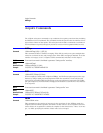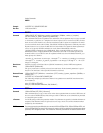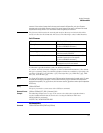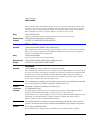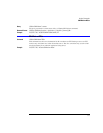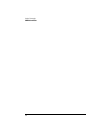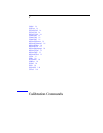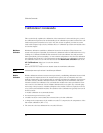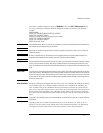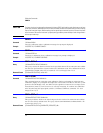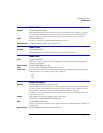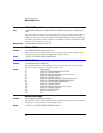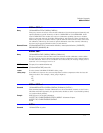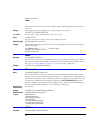
7-2
Calibration Commands
Calibration Commands
This section briefly explains the calibration of the instrument. It is intended to give you and
the calibration lab personnel an understanding of the calibration procedure and how the cali-
bration subsystem is intended to be used. Also, this section acquaints you with the terms
used in this chapter, help screens, and data sheets. A calibration procedure is included at the
end of this chapter.
Mainframe
Calibration
Mainframe calibration establishes calibration factors for the analyzer. These factors are
stored in the analyzer's hard disk. You initiate the calibration from the Calibration menu or by
sending the :CALibrate:FRAMe:STARt command. You should calibrate the analyzer main-
frame periodically (at least annually), or if the ambient temperature since the last calibration
has changed more than ±5° C. The temperature change since the last calibration is shown on
the calibration status screen which is found under the
Mainframe and Skew tab on the
All Calibrations dialog box. It is the line labeled:
Cal
ΔT ____________ ° C.
Refer to the Service Guide has more details about the mainframe calibration.
NOTE Let the analyzer warm up for at least 1 hour before you calibrate it.
Module
Calibration
Module calibrations enhance measurement precision by establishing calibration factors which
compensate for imperfections in the measurement system, such as variations due to the
ambient temperature. It is recommended you routinely perform this calibration for best mea-
surement accuracy. Module calibration factors are valid only for the mainframe and slot in
which the module was calibrated. You can install the module in the slots provided for Chan-
nels 1 and 2 or for Channels 3 and 4. Module calibrations do not require any external equip-
ment setup. Always remove or disable all inputs to the module. However, inputs do not have
to be removed from 83496A modules. The duration of the calibration is typically between 60
and 90 seconds.
A module calibration is recommended when:
• the instrument power has been cycled
• a module has been removed and then reinserted since the last calibration
• a change in the temperature of the module exceeds 5
° C compared to the temperature of the
last module calibration (
ΔT > 5° C)
• The time since the last calibration has exceeded 10 hours



